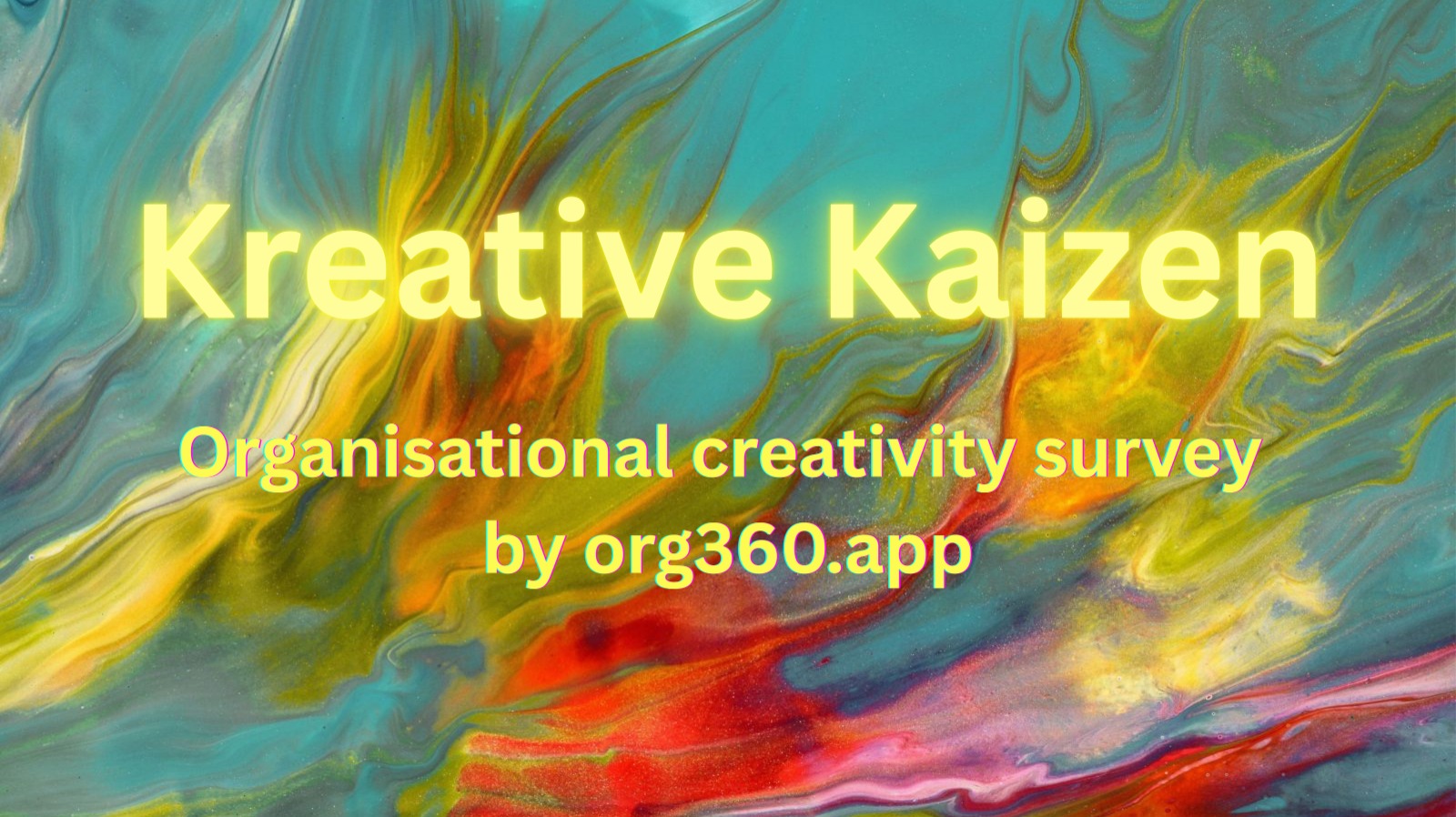Organizational creativity is more than a nice-to-have. In the social sector and beyond, it can mean the difference between steady progress and breakthrough innovation. Creative cultures are the ones that adapt faster, solve complex problems, and make a bigger impact.
And yet, while almost everyone agrees that creativity and innovation are essential, the research on how to foster creativity at work is rarely applied in practice. That’s where Kreativity Kaizen comes in.
We designed this workplace creativity survey to do two things at once:
- Measure whether your organizational culture supports creativity
- Collect a first round of creative ideas directly from your staff
Two benefits, one survey.
What Is Creativity in Organizations?
Psychologist James Kaufman defines creativity as producing something both novel and useful.
- Example (Novel + Useful): Kenya’s M-Pesa was the first mobile money service in East Africa. It worked via SMS on basic phones, making it both accessible and transformative.
- Counterexample (Novel but Not Useful): If M-Pesa had launched only as a smartphone app, it would have been novel but irrelevant — very few people had smartphones at the time.
This is an important reminder for leaders: organizational creativity isn’t about “wild ideas” for their own sake. It’s about developing ideas that actually work in your specific context.
Why Organizational Culture Matters for Creativity
Research from psychologist Mihaly Csikszentmihalyi, known as the “father of flow,” shows that creativity emerges from the interaction of three forces:
- The individual – people bringing fresh ideas
- The domain – the field of knowledge or expertise
- The field – the organization or system that selects and supports ideas
Even the most creative employees won’t thrive if their organization resists change. A receptive, supportive culture is the “soil” where creativity grows. That’s why measuring organizational creativity is so important.
What Research Says About Fostering Creativity
Harvard professor Teresa Amabile developed the KEYS framework, a research-based tool that identifies the conditions that consistently drive innovation in organizations.
Her studies highlight six workplace factors that encourage creativity:
- Organizational encouragement: Fair evaluation of ideas, recognition for creative contributions
- Supervisory encouragement: Managers who support experimentation and unconventional approaches
- Positive team dynamics: Trust, collaboration, and constructive communication
- Freedom: Autonomy in how employees approach their work
- Sufficient resources: Time, information, funding, and tools to innovate
- Challenging work: Tasks that are meaningful and stretch skills without overwhelming
She also uncovered two major creativity killers:
- Workload pressure: Too much work, constant interruptions, unrealistic deadlines
- Organizational impediments: Politics, rigid hierarchies, and resistance to change
Finally, her research revealed the Progress Principle: the strongest driver of creative engagement is making meaningful progress. Small wins — solving a technical challenge, reaching a milestone, or receiving positive feedback — fuel motivation and innovation more than incentives or recognition alone.
The Kreativity Kaizen Survey
We designed the Kreativity Kaizen survey to put this research into action. In just a few minutes, staff can answer questions that reveal whether your workplace culture supports or stifles creativity.
Sample questions include:
- My manager encourages me to share new ideas, whether small or ambitious.
- My team celebrates learning, experiments, and curiosity.
- I feel safe proposing unconventional ideas that challenge current approaches.
- I regularly experience a sense of progress in my work, even in small steps.
Two open-ended prompts go deeper:
- What would make it easier to share ideas here?
- What’s the biggest thing that gets in the way of moving ideas forward?
This combination makes Kreativity Kaizen a fast, practical tool for assessing organizational creativity.
Kaizen: Turning Insights Into Action
Unlike most workplace surveys, Kreativity Kaizen also captures a first round of employee-generated ideas. This is inspired by Kaizen, the Japanese philosophy of continuous improvement through small, incremental changes.
Kaizen principles include:
- Everyone can contribute ideas
- No idea is too small
- Improvements should be tested quickly and cheaply
- Learning from both successes and failures
By asking each employee to submit one idea, the survey transforms into an idea management tool. Staff propose ideas, describe potential benefits, and indicate what’s needed to test them. This ensures that organizations don’t just measure creativity — they immediately activate it.
Why Use Kreativity Kaizen?
- Assess your culture: Get a clear picture of whether your organization fosters creativity.
- Identify barriers: Spot the biggest obstacles to innovation before they stall progress.
- Generate ideas: Collect actionable suggestions from employees at every level.
- Build momentum: Create a cycle of continuous improvement that fuels larger innovations over time.
By combining organizational creativity research with the principles of Kaizen continuous improvement, Kreativity Kaizen helps organizations strengthen their culture and unlock innovation.
Try Kreativity Kaizen Today
Kreativity Kaizen includes:
- A modern survey platform with reminders
- A clear report with scores and open-text responses
- Three AI-generated insight reports (from ChatGPT, Gemini, and Claude) offering unique perspectives and practical recommendations
🚀 Launch price: $29 on Org360
Because the best way to foster creativity is to start practicing it.
👉 Start your Kreativity Kaizen survey today with Org360
